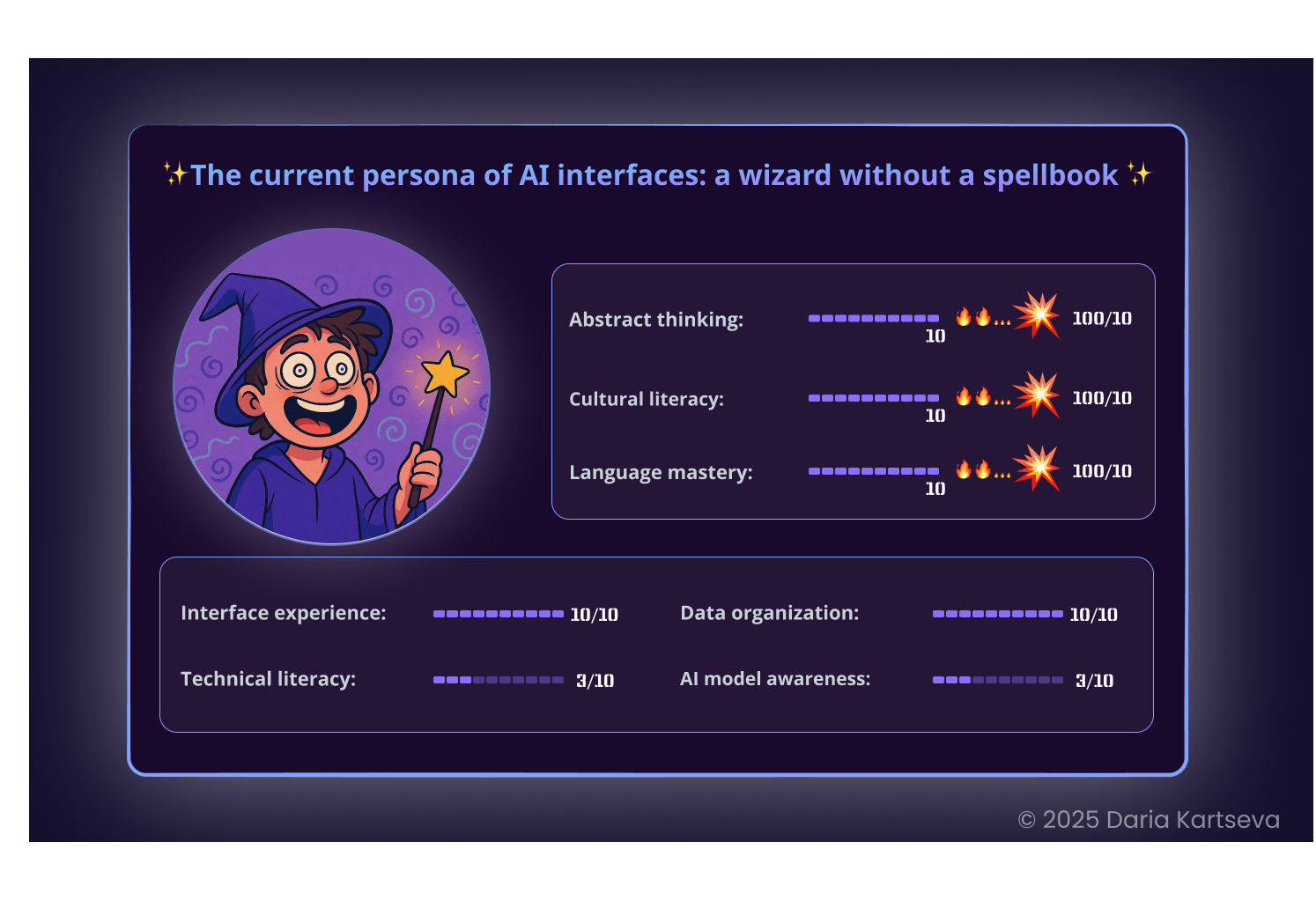Designing UX for AI tools: turning “magic” into clear expectations

Daria Kartseva, UX Designer, August 2025
Hi! I’m Daria — a product and UX designer with 15+ years of experience.
Recently, I’ve been working a lot with generative AI and I see the same problem again and again: the technology is powerful, but the interfaces still make users guess the “right magic words.”
Recently, I’ve been working a lot with generative AI and I see the same problem again and again: the technology is powerful, but the interfaces still make users guess the “right magic words.”
AI says: “Write a prompt” — and then it’s luck.
If the result is bad, people think it’s their fault: wrong phrasing, wrong words.
They start searching for “secret tricks” and hope for the best.
If the result is bad, people think it’s their fault: wrong phrasing, wrong words.
They start searching for “secret tricks” and hope for the best.
But often the problem is not the user:
the model is simply not trained on some of the parameters they try to specify.
And the interface does not warn about it.
the model is simply not trained on some of the parameters they try to specify.
And the interface does not warn about it.
I started thinking: how can we design AI products that support the user,
instead of leaving them alone with unpredictability?
instead of leaving them alone with unpredictability?
In this post series, I want to explore what a generative AI interface needs,
- so users can understand how to write a request,
- see what to expect from the model,
- and control the output.
The first step is the starting interaction.
The UX goal here is not to hide AI limitations, but to help any user — beginner or expert — understand what the system can do, and what it may ignore:
The UX goal here is not to hide AI limitations, but to help any user — beginner or expert — understand what the system can do, and what it may ignore:
✔ show which parameters the model really understands
✔ give structure so the request becomes more effective
✔ visualize what is possible or may be ignored
✔ teach users during the process — softly and on time
✔ give structure so the request becomes more effective
✔ visualize what is possible or may be ignored
✔ teach users during the process — softly and on time
Below, you will find slides with 5 key UX principles that make AI generation clear, honest, and user-friendly.
You can find more details in my portfolio — Turning Unpredictable AI into a Guided Experience
Key takeaways
New AI products need new UX patterns.
But basic usability principles are still here (hello, Nielsen’s heuristics).
But basic usability principles are still here (hello, Nielsen’s heuristics).
A UX designer is a translator between human meaning and machine probabilistic thinking.
Our job is to help users see boundaries, understand possibilities, and feel in control.
Our job is to help users see boundaries, understand possibilities, and feel in control.
Right now, people need guidance and context not to get lost.
So we must design learning inside the flow — helpful, lightweight, and always accessible when needed.
So we must design learning inside the flow — helpful, lightweight, and always accessible when needed.
September 2025
Related articles
Generative AI UX: Version Control Starts With the “Perfect Result
Even a perfect AI result isn’t final. This article shows why version control matters from the very first “ideal” output, and how UX helps users compare, organize, and trust generative results.
Designing for Uncertainty: How UX Shapes the AI Experience | UX for Generative Systems
AI is unpredictable — but UX can make it understandable. Learn how design helps users navigate uncertainty, set expectations, and build trust with generative AI tools.
When AI Rules Change Between Products
How different AI services interpret prompts differently, why user experience does not transfer between tools, and how UX can protect user expectations.
Kartseva Daria
Phone: +358 40 170 33 53 (fi)
E-mail: kartseva.daria@gmail.com
E-mail: kartseva.daria@gmail.com